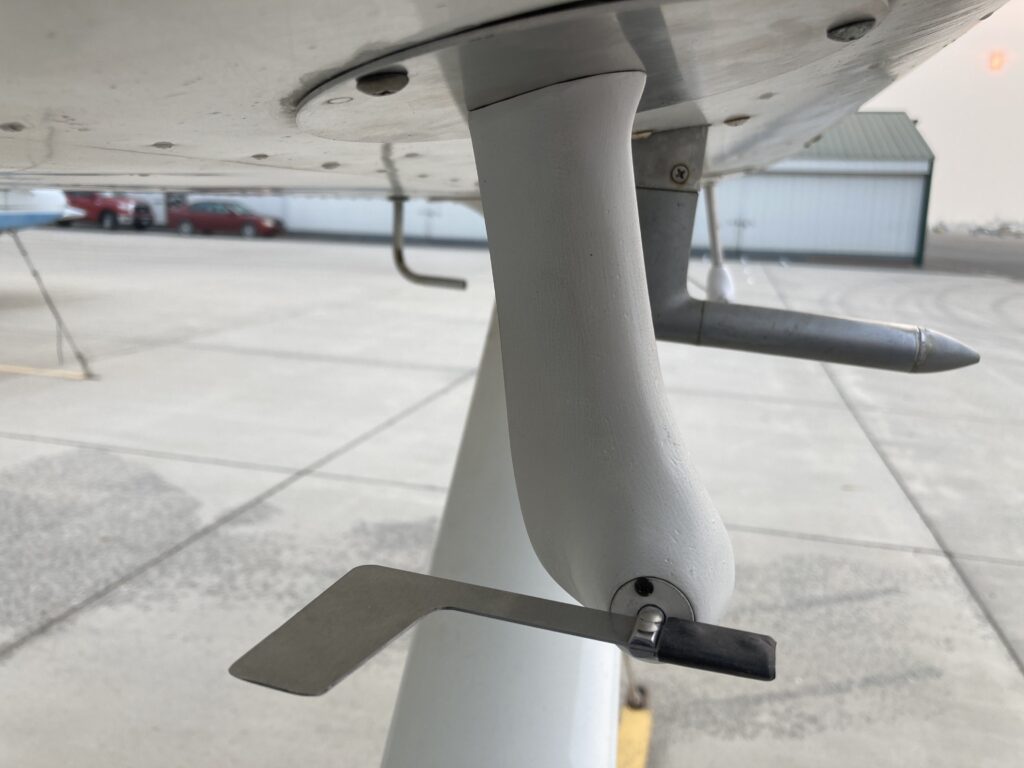The FeelFlight Grip thrust pins are activated by an angle of attack sensor. Modern technology actually allows this unit to be quite small and compact. In most cases it can be mounted to an inspection plate on the bottom of the wing. This method is particularly non-intrusive. The small “three wire” cable can than be routed through the wing, behind the panel and plugged into the Digital Control Module. It can also be mounted directly to the wing. We have chosen the vane/encoder type of AOA because it is a direct measurement of the relative airflow and AOA. By contrast, pitot tube type of AOA systems measure the negative pressure above the wing related to angle of attack rather than a direct measurement of AOA. The vane type used by FeelFlight provides a very precise measurement. Also, the advanced magnetic encoder used in our sensor provides angle resolution to 1/20 of a degree. When climbing out at Vy … best rate of climb, it can be vitally important that the pilot maintains this Vy angle of attack. It allows the pilot to reach maximum altitude in the shortest amount of time. This can be life saving if the engine should fail. The pilot hopefully has achieved enough altitude to glide back to the runway. The FeelFlight system allows the pilot to maintain Vy within +/- one half of a degree. This kind of precision does not exist in most GA angle of attack systems.
In addition, should the pilot lose power while in cruise, being able to hold a precise Vy angle of attack will give the pilot maximum glide distance. This can aid in finding a safe landing spot. If you purchase and install a FeelFlight system you may be surprised to see how much the indicated airspeed versus AOA varies with gross weight, balance, density altitude and wing bank. It can easily exceed 10 mph variation for any one of these factors and more when they are combined. This is one of primary reasons the highest loss of control maneuver is turning base to final. Many pilots believe they are above stall speed based on basic POH numbers for stall. In actuality their stall speed may be much higher based on the variables listed. By contrast, AOA never varies for Vy, Vx and Stall.
A precise ability to fly at Vx is also crucial. It is the angle of attack for maximum angle of climb. This is important for clearing obstacles. However, very significantly, it is also where the aircraft enters the “back side of the power curve.” It is well advised that the pilot … when his aircraft velocity slows to Vx – becomes very aware of his flight input! It should be heeded that the pilot has now entered “slow flight” and should be extra careful. Because FeelFlight produces an accurate discrete measurement of Vx, this will help any pilot increase their awareness of flight slower than Vx.
